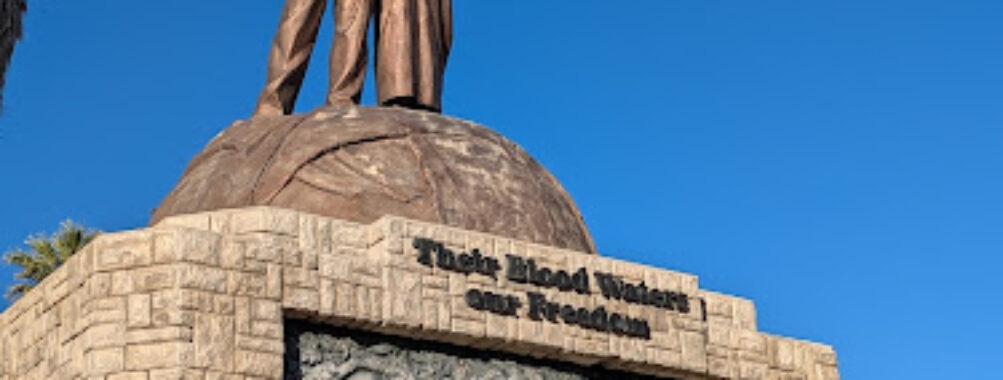
Alte Feste
Table of Contents The Alte Feste in Windhoek, Namibia, is one of those places that quietly holds the weight of history in its walls. Built back in 1890, it originally served as a military fort during the German colonial period before later transforming into the National Museum of Namibia. For travelers who love to dig into the layered past of a destination, this building feels like a time capsule—one that has seen the city evolve from a colonial outpost into a thriving African capital. It’s not flashy or overly polished, but that’s part of its charm. Walking through its stone corridors, you can almost hear the echo of boots, the whispers of soldiers, and the hum of change that swept through the decades. Now, the Alte Feste is undergoing a revival. The project to restore and reimagine it as “The New Alte Feste” is an ambitious one, aiming to breathe fresh life into its weathered walls while preserving its authenticity. I remember the first time I saw it—standing there under the Namibian sun, its whitewashed exterior slightly faded, yet dignified. It’s the kind of place that doesn’t scream for attention but rewards those who take the time to look closer. If you’re the type who enjoys peeling back the layers of history, this is the spot for you. Inside, the exhibits tell stories of Namibia’s colonial past, independence, and cultural identity. Some displays may feel dated, but that’s part of the experience—it’s raw and real. You’re not just looking at artifacts; you’re witnessing the country’s journey of resilience and transformation. And honestly, that’s what makes the Alte Feste special. It’s not just a museum—it’s a storyteller in stone. What I personally love is how the Alte Feste manages to balance the old and the new. You might see scaffolding in one corner and a weathered cannon in another—it’s that mix of restoration and preservation that gives it character. And if you’re into photography, the lighting here in the late afternoon is stunning. The sun hits the walls just right, casting long shadows that seem to stretch across time itself. Windhoek enjoys a semi-arid climate, which means plenty of sunshine year-round. The best time to visit the Alte Feste is during the cooler months from May to September. The days are pleasant, and the skies are crisp and blue—perfect for exploring historical sites without breaking a sweat. I’ve been there in December once, and let me tell you, the midday heat can be relentless. If you do go during the warmer months, aim for early morning or late afternoon visits. The lighting is better for photos anyway, and you’ll avoid the harshest sun. It’s also worth checking if there are any cultural events or exhibitions happening during your stay. The new restoration project sometimes hosts temporary displays, art installations, or guided tours that give deeper insight into Namibia’s evolving identity. Those are absolutely worth timing your visit around. The Alte Feste sits right in the heart of Windhoek, making it easy to reach from most parts of the city. If you’re staying downtown, it’s a short drive—or even a walk if you don’t mind a bit of uphill strolling. Taxis are readily available, though I’ve found that using a local ride-hailing app can be more reliable and transparent with pricing. For those who prefer a bit of adventure, renting a car gives you the flexibility to explore nearby attractions like the Christuskirche or the Independence Memorial Museum, both just a stone’s throw away. Parking is usually available nearby, though it can get busy during weekends or public holidays. I once made the mistake of arriving right after a local event ended, and finding a spot was like a treasure hunt. So, if you’re planning to visit on a weekend, go early—it’s worth it for the peace and quiet. Visiting the Alte Feste isn’t just about ticking off another museum—it’s about connecting with Namibia’s story. Here are a few tips that might make your experience smoother and more meaningful: One more thing—don’t expect everything to be perfect. Some parts of the building are still under renovation, and a few exhibits might feel a bit dated. But honestly, that’s part of what makes it so authentic. You’re witnessing history in transition, and that’s something special. I’ve visited countless museums around the world, and few have that raw, evolving energy that the Alte Feste does. It’s like watching history breathe again. For travelers who crave depth and authenticity, the Alte Feste offers both. It’s not a glitzy attraction or a polished tourist trap—it’s real, layered, and quietly powerful. When you step through its gates, you’re not just entering a museum; you’re stepping into Namibia’s living memory. And that’s an experience worth having.Description
Key Features
Best Time to Visit
How to Get There
Tips for Visiting
Location
Places to Stay Near Alte Feste
Find and Book a Tour
Explore More Travel Guides
No reviews found! Be the first to review!